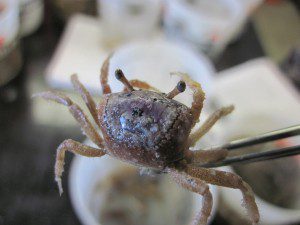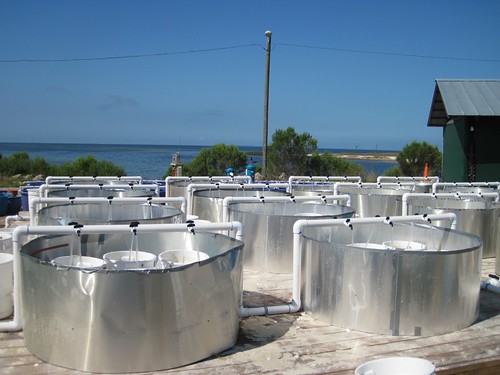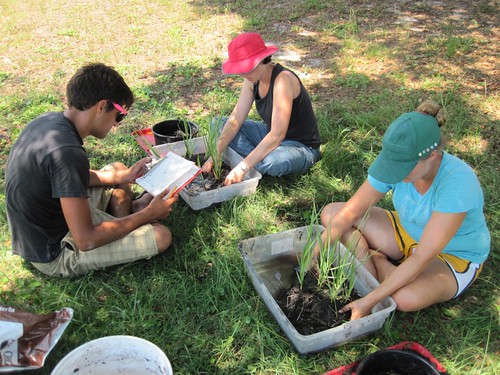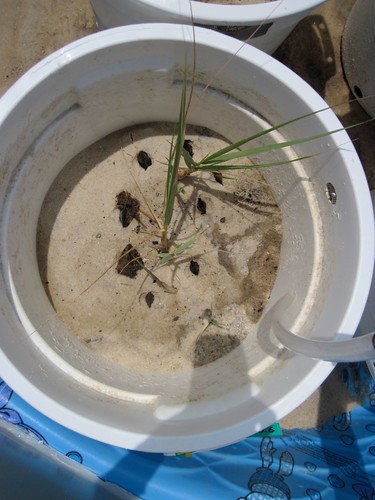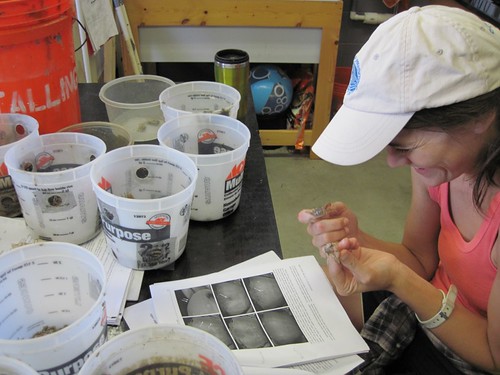Dr. Randall Hughes FSU Coastal & Marine Lab
This summer we’ve been conducting an experiment on our new deck to look at the effects of fiddler crabs and ribbed mussels on Spartina alterniflora (smooth cordgrass).
Past studies by Dr. Mark Bertness have shown that crabs and mussels by themselves can have positive effects on plant growth – most likely because crabs can reduce the stress of low oxygen in the sediments by building their burrows, and mussels can add nutrients to the sediments.
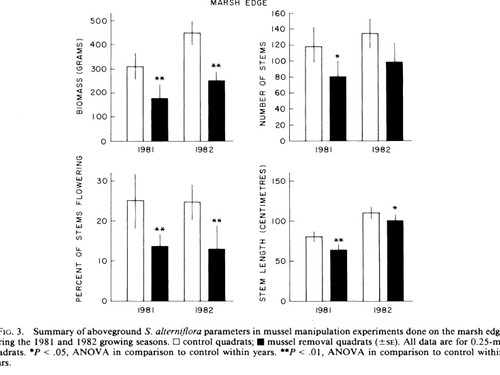
Figure 3 from Mark Bertness’s 1984 Ecology study illustrating the positive effects of mussel presence (white bars) on Spartina
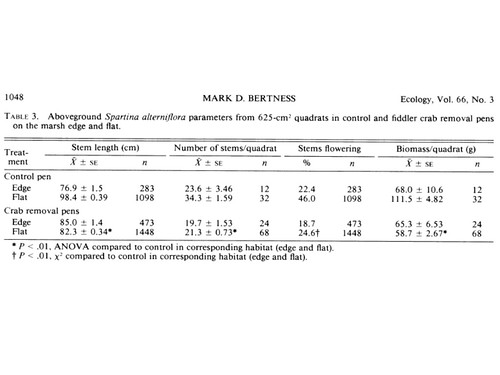
Table 3 from Mark Bertness’s 1985 Ecology study. Fiddler removal has a negative effect on Spartina in the marsh flat, but not the marsh edge.
Although both fiddlers and mussels occur together in the field, no studies have looked at how the combination affects the plants. Are the positive effects of each species by itself doubled? Or are they redundant with each other? Do crabs somehow reduce the positive effect of mussels, or vice-versa? How many crabs or mussels do you need to get a positive effect on Spartina? These are some of the questions that we hope to answer with our experiment.
But first, we had to get everything set up. There were several long and hot days of shoveling sand into our “mesocosms” (10 gallon buckets) – many thanks to Robyn, Chris, Althea, and all the others who took care of that task! Then there was another day spent transplanting the Spartina.
Finally, it was time to add the fiddlers and mussels, and everything began!
Althea and Chris have been leading the charge on this experiment, and they’ve spent a lot of time getting to know (and identify) the fiddler crabs. All in all, a pretty fun study organism!
We’ll continue the experiment another month and then measure the height and density of the plants in each treatment to see if there are any differences. Once this experiment is complete, we’ll set up a separate one asking somewhat of the converse question – are two enemies (periwinkle snails and grasshoppers) worse than one? We’ll keep you posted.


